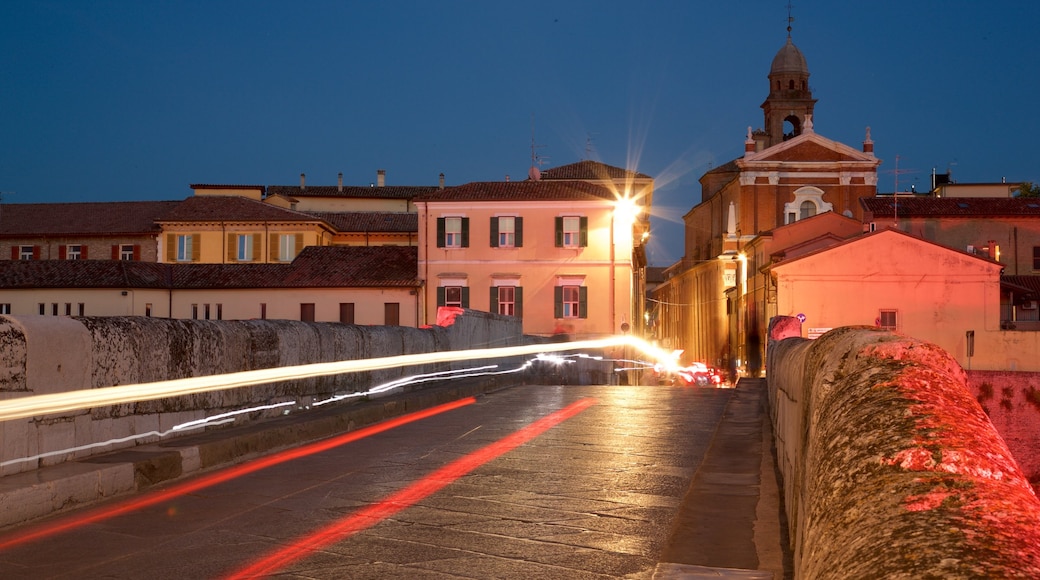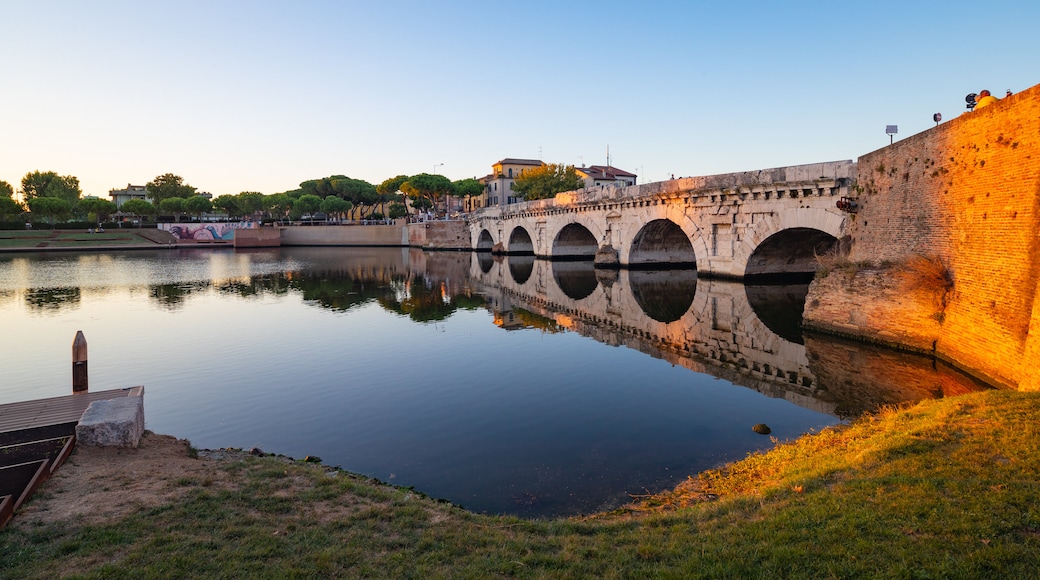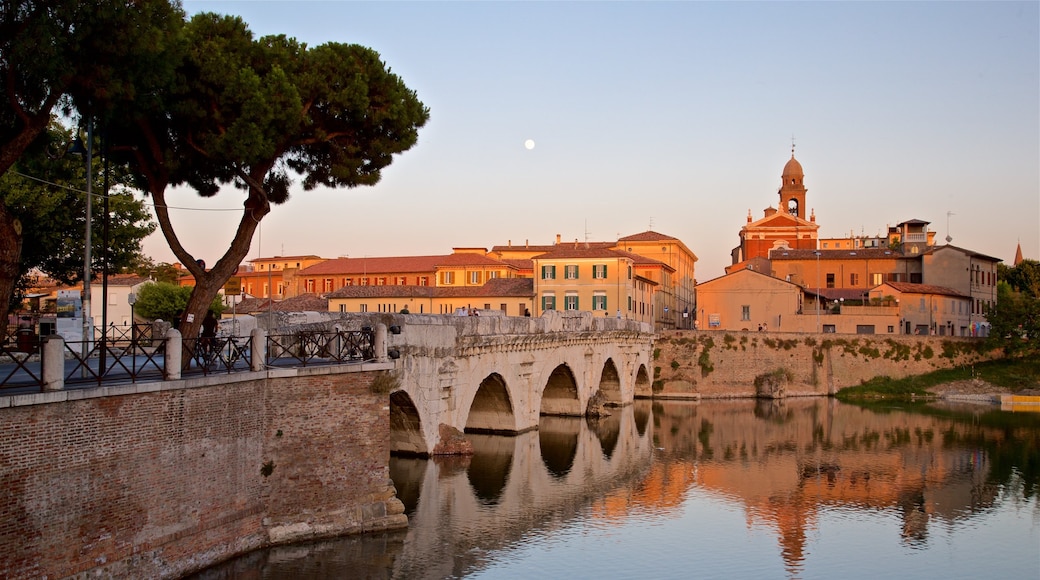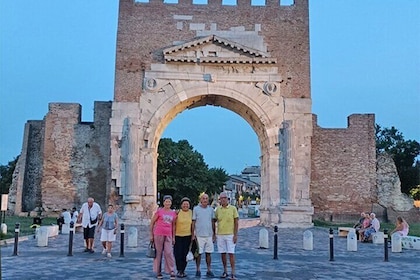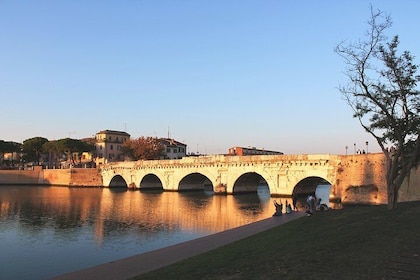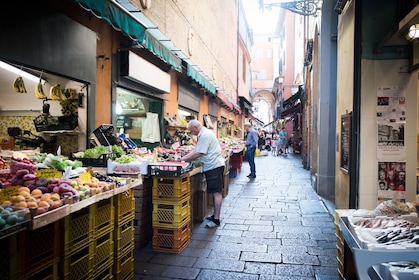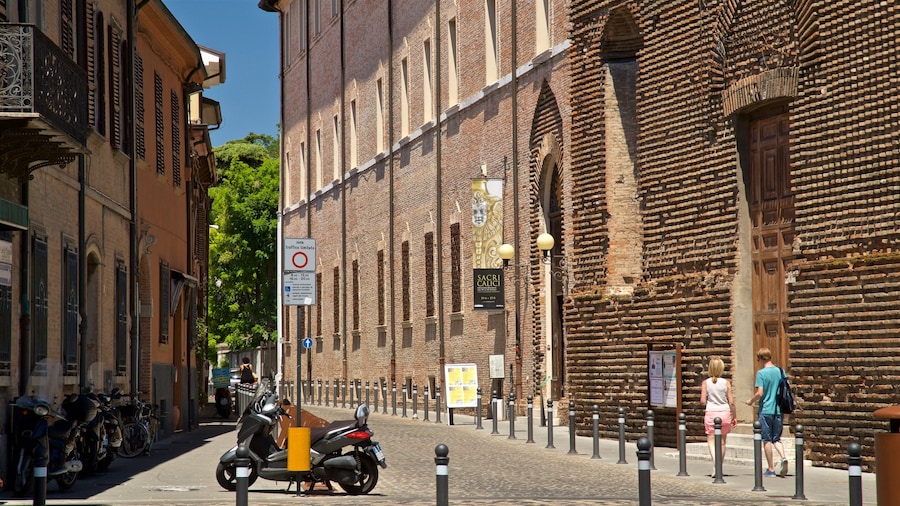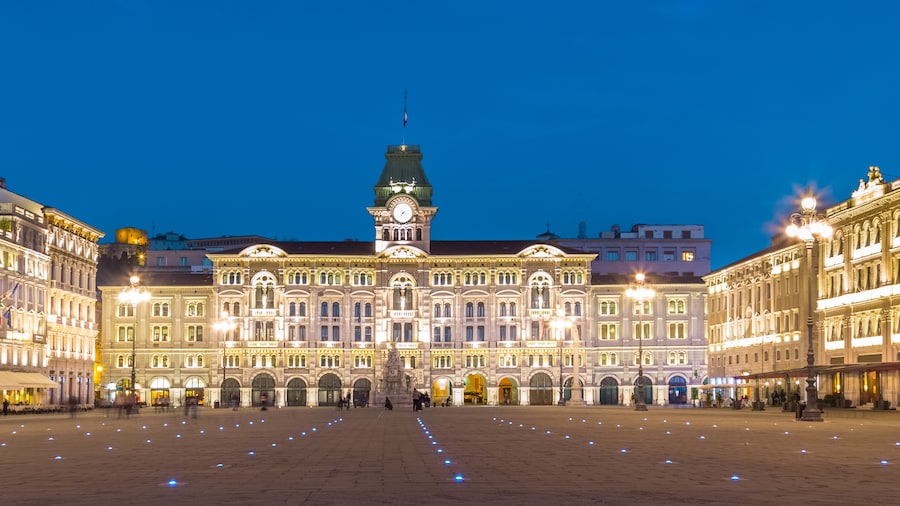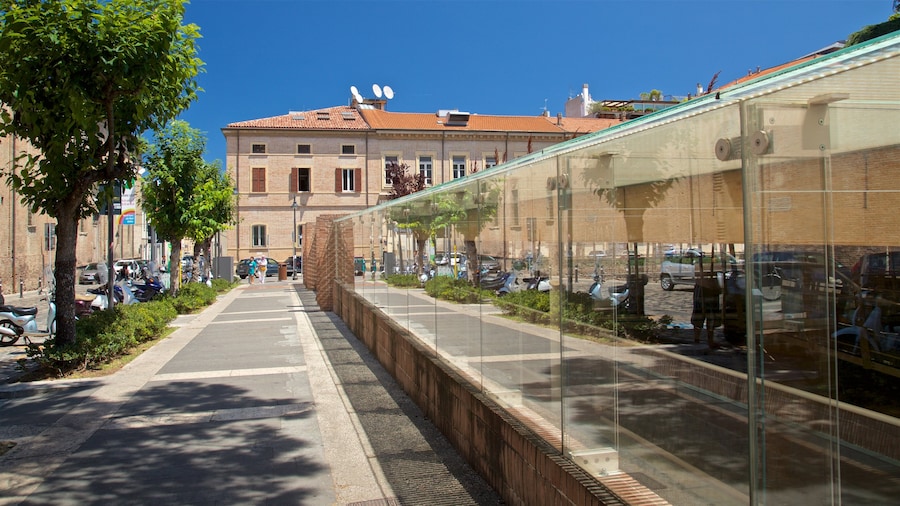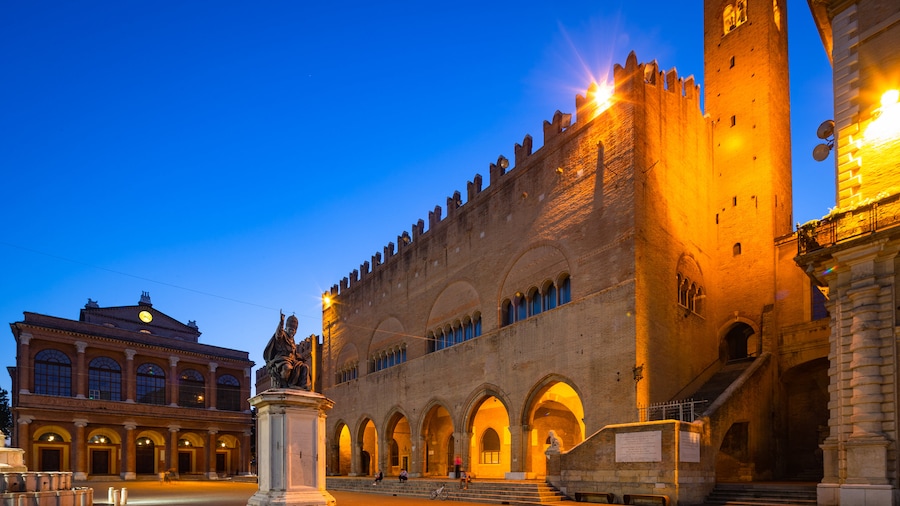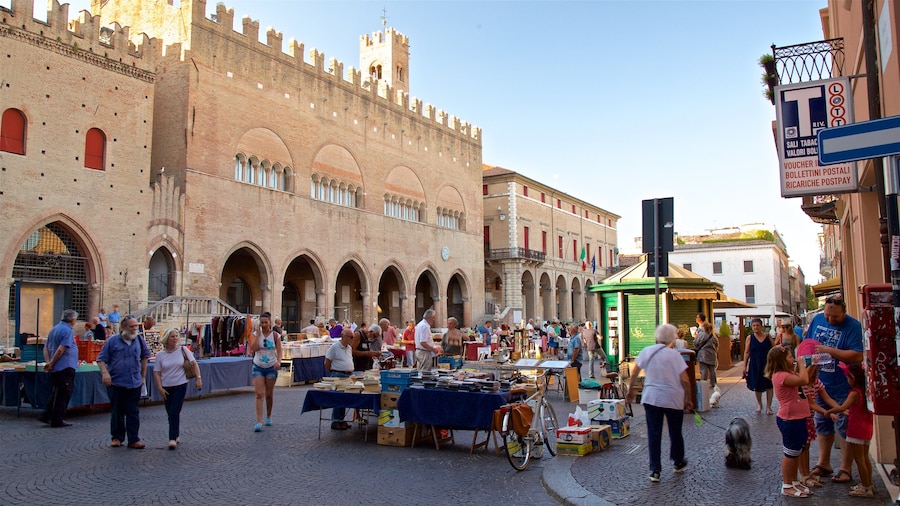Walk in the footsteps of Rimini’s Roman ancestors when you visit this ancient and beautiful bridge.
Sit in a riverside café and watch the citizens of Rimini make their way across the Tiberius Bridge just as they have for hundreds of years. Look for the ancient inscriptions to the Roman Emperors who oversaw the construction of the bridge and learn how the structure has survived floods, wars and attempted explosions.
The Tiberius Bridge was commissioned by the Emperor Augustus in A.D. 14, but it wasn’t completed until seven years later. By this time, Tiberius was Emperor and he named the bridge after himself. The original bridge spanned the River Marecchia. This river was diverted early in the 20th century and the water flowing below is now a canal. Despite earthquakes and Nazi attacks during World War II, the bridge remains much as it would have looked in Roman times and is one of Rimini’s oldest and most iconic sights.
Stroll north from Rimini’s historical centre and see the five wide arches of the Tiberius Bridge spanning the canal. Even from a distance, you will see the Istrian marble, smoothed by centuries of flowing water, gleaming in the sun. As you get closer, examine the inscriptions on the bridge. The Latin text translates as “given by both emperors”, referring to Augustus and Tiberius.
During the summer months the bridge provides a stunning backdrop to several events, such as the concerts and theatrical performances that take place on the canal. To see the bridge at its best, visit when it is closed to traffic for a festival or public event. Sit on the banks of the canal and marvel that people have been crossing the same bridge for nearly 2,000 years.
The Tiberius Bridge is located a 5-minute walk north from the Piazza Cavour. It connects Rimini’s historical centre with the suburb of San Guiliano and is open all hours.
